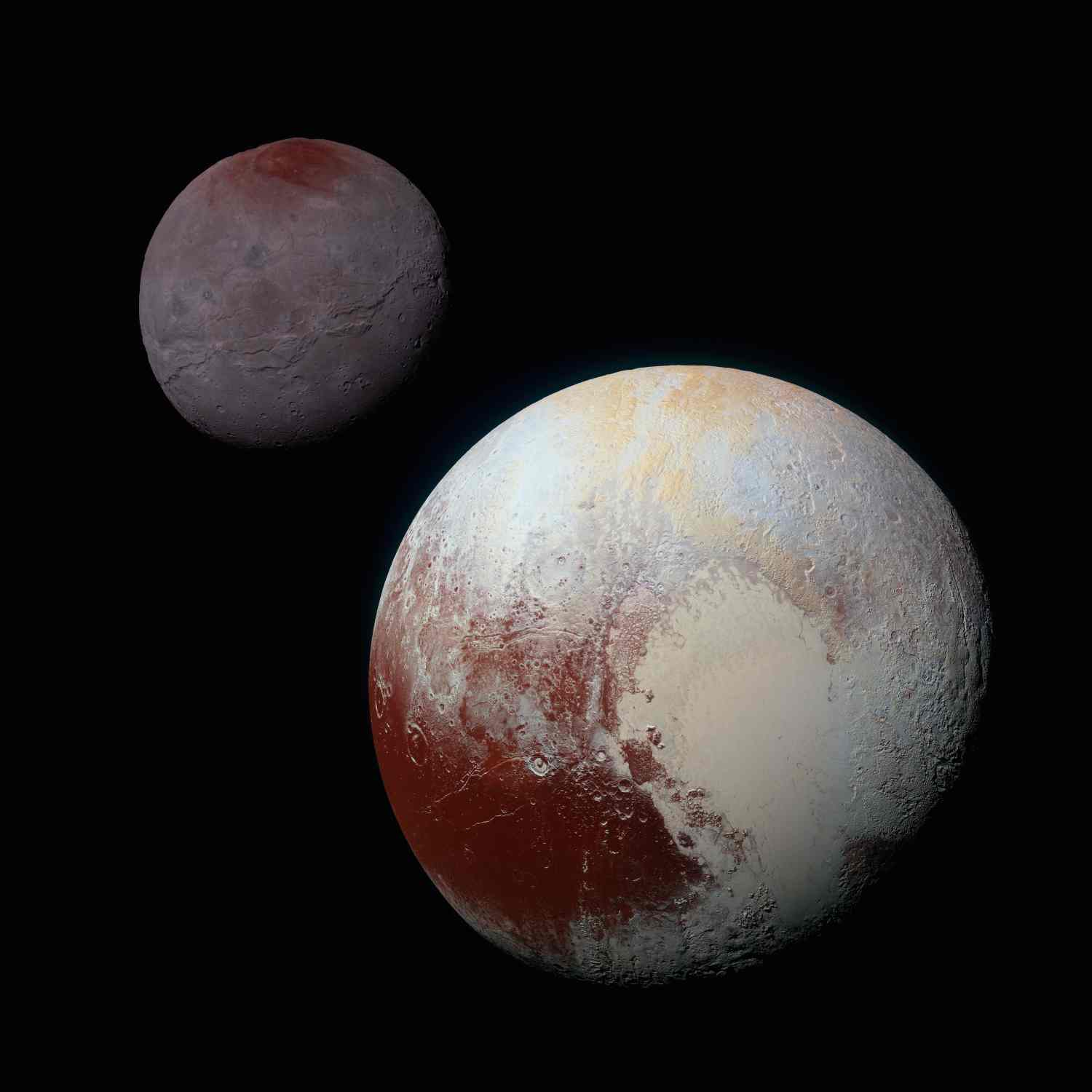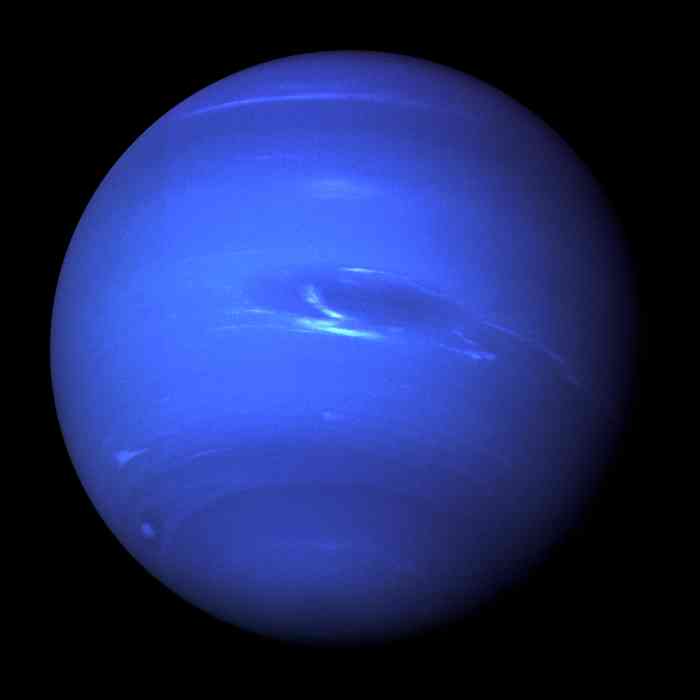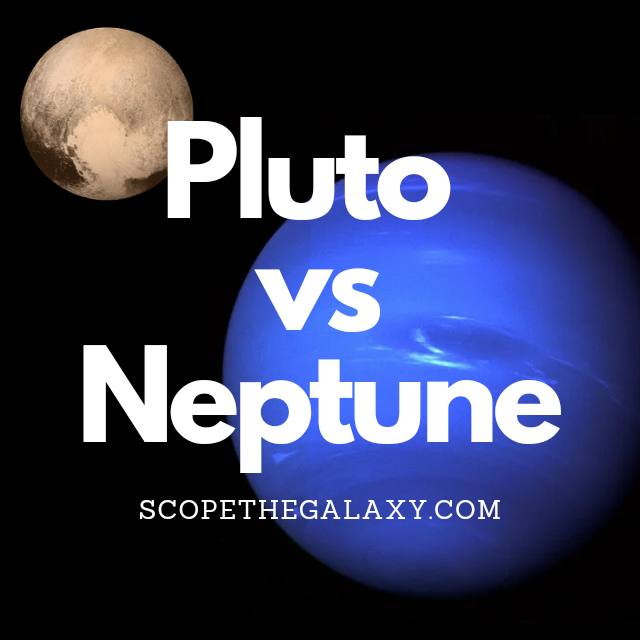*This post may contain affiliate links. This means we may make a commission if you purchase an item using one of our links*
The main differences between Pluto and Neptune would be that the former is a dwarf planet and the latter an ice giant, roughly 25 Pluto’s could fit across Neptune, Pluto is tidally locked to one of its moons whereas Neptune isn’t and the dwarf planet orbits the Sun in an elliptical pattern whilst Neptune does so in a normal circular pattern.
These aren’t all the differences but, are some of the core differences between the two so, continue reading if you want a more detailed breakdown of more of their similarities and differences.
What Is The Planet Pluto?
Table of Contents

In the past Pluto was the 9th farthest official planet in our solar system however, in 2006 after many debates between astronomers, the International Astronomical Union officially downgraded it to a dwarf planet.
The reason for this downgrade at the time was primarily down to Pluto simply being too small when compared to every other planet and even the moons orbiting these planets. Pluto’s dwarf status is still debated to this day but, for now it remains under this dwarf bracket for a planet
Its diameter for example is only 2,370km, which is a third of Earth’s Moon. With that being said, despite the significant size discrepancy Pluto shows, it still does have more moon like objects orbiting it than Earth and I’m not saying just one more.
In total this terrestrial dwarf planet has 5.
Pluto’s atmosphere consists mostly of molecular nitrogen whilst molecules of methane and carbon monoxide have been observed also. As for its surface, it consist mostly of frozen nitrogen, methane, and carbon monoxide ices.
One of Pluto’s most unique characteristic is that Charon (its largest moon) is tidally locked to it and vice versa, which means that the two essentially orbit each other where, in essence only one side of Charon and one side of Pluto’s surface will face each other at any given time.
Pluto’s temperature is between -222 to -232 degrees Celsius based on how close it gets to the Sun when orbiting it, whilst its core temperature isn’t anything too special sitting around 500 – 1,000 degrees Celsius.
The main reason it’s as cold as it is and has a relatively cold core in comparison to the other planets would be mostly down to its size. A larger size would mean more mass could be compressed at the center which would produce more heat at the core.
Pluto’s orbit is also different from the other main plants in our solar system, following an elliptical orbital path as opposed to the circular path the others take. As a result of its distance from the Sun, Pluto will complete each one of these elliptical cycles around the Sun once every 247.78 years.
Even its rotational cycle is very slow, where one cycle is completed in 157 hours. Another interesting fact is the Pluto’s axial tilt is almost on its side at 57 degrees, similar to Uranus.
What Is The Planet Neptune?

Neptune is the 8th farthest planet from the Sun and ranks among the bigger planets in our solar system. As the 8th farthest planet from the Sun, it does take Neptune a very long time to complete 1 orbital cycle around the Sun.
This takes 165 years to complete which is far longer than the 16 hours needed to complete 1 full day/full spin around the axis.
In regards to its composition, Neptune is mostly made up of a thick swath of water closer to the center, methane, ammonia, hydrogen and helium molded around its Earth sized core.
As a result of the excess amount of methane and the inclusion of another undiscovered element within the atmosphere, Neptune’s color is a far deeper blue than the likes of Uranus, which also has a methane based atmosphere.
The planet is 49,244km in diameter, making it roughly 4 times Earth’s diameter, and would allow around 57 Earth sized planets to fit inside it. This also makes Neptune the 4th largest planet in our solar system.
Neptune is very cold, which is mostly down to its distance from the Sun, where its atmospheric temperature sits between -220 to -230 degrees Celsius. Its core is far hotter coming in at 5,100 degrees Celsius and is the very likely cause for the liquid water present within the planet.
Subsequently, the erratic temperature and gaseous composition of Neptune, is what constitute towards its turbulent behavior.
In fact Neptune has the fastest winds in our solar system, producing some that eclipse speeds of 2,000km per hour. The fastest winds on Earth would only be a fifth of these speeds at most.
At this moment in time we have discovered 14 moons orbiting Neptune and have also observed 5 thinner rings surrounding the ice giant.
Similarities Between Pluto And Neptune
Although Pluto and Neptune don’t share too many similarities, they still have the odd few, which would include the below:
- Both planets are orbiting the Sun.
- Both have hotter central core.
- Both have multiple moons.
- Both are a spherical shape.
- Both have ice on their surfaces.
- Both planets have roughly the same temperature of around -220 to -230 degrees Celsius range.
Differences Between Pluto And Neptune
As for the differences between the Pluto and Neptune, they would include the below:
- Neptune has 5 rings whilst Pluto has zero.
- Pluto has 5 moons whilst Neptune has 14.
- Neptune has a diameter of 49,244km whereas roughly 25 Pluto’s could fit across this ice giant where its diameter is 2,370km.
- Neptune is a terrestrial planet meaning its surface is mostly rocky with elements of ice among it whilst Neptune is a gas giant with elements of water and ice within it.
- Neptune orbits the Sun once every 165 years whereas Pluto takes 247.78 years to complete an orbit.
- Neptune has the strongest winds in our solar system, reaching speeds in the region of 2,000 km/p whereas Pluto’s thinner atmosphere would not allow this.
- Neptune magnetic field strength is stronger than Pluto’s, which is practically non-existent.
- Pluto has a colder core of the two planet where its temperature ranges between 500 -1,000 degrees Celsius range. Neptune’s core temperature is around 5,100 degrees Celsius.
- Neptune’s axial tilt is 28 degrees whilst Pluto’s is 57 degrees.
- One day in Pluto takes 157 hours whilst Neptune completes a cycle in 16 hours .
- Pluto is tidally locked to Charon. Neptune is not tidally locked to any of its moons.
- Pluto orbits the Sun elliptically whereas Neptune does so in a circular pattern.
Summary
In the end of the day Neptune is an ice giant and Pluto is small dwarf planet that is also essentially a terrestrial celestial object, so the differences between the two are quite vast.
Yes they may orbit the same star and have multiple moons but, one is far more erratic, bigger and actually regarded as a normal planet and the other a dwarf planet. The differences between the two are distinct enough to really separate Pluto and Neptune from each other.


